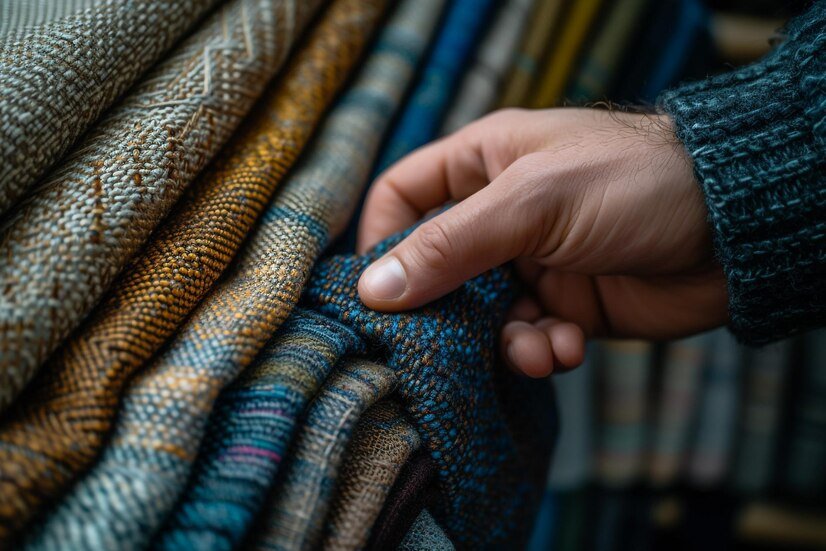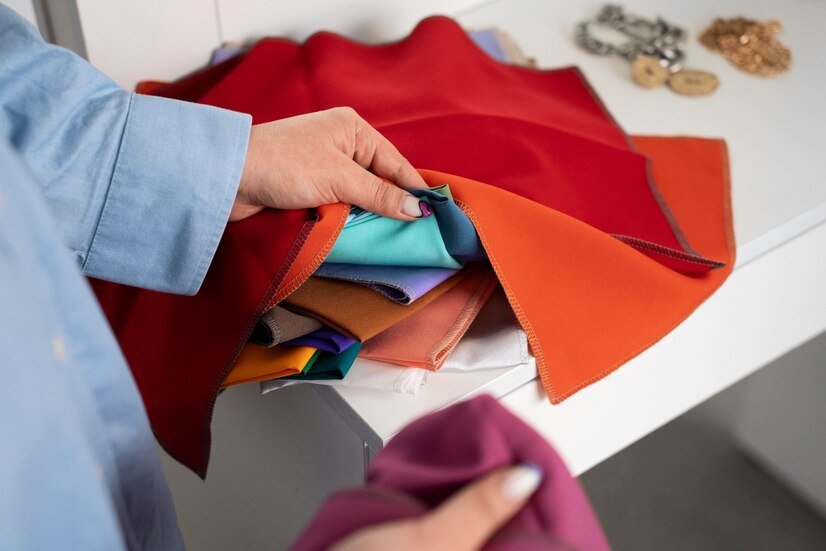Business
The Versatile Fabric: Exploring the World of Terry Cloth
Terry cloth, with its soft texture and absorbent properties, has long been a staple in the world of textiles.

Terry cloth, with its soft texture and absorbent properties, has long been a staple in the world of textiles. From bath towels to spa robes, this versatile fabric finds its way into numerous products, offering comfort and functionality. Let’s delve into the fascinating realm of terry cloth, exploring its history, characteristics, manufacturing process, applications, and much more.
Terry cloth is a cotton fabric known for its looped pile construction, which gives it a soft, plush texture. The loops are formed by weaving additional yarns into the base fabric, creating a surface that is highly absorbent and ideal for drying.
History and Origin
The origins of terry cloth can be traced back to the 18th century, when it was first produced in England. The name “terry” is believed to have come from the French word “tirer,” meaning to pull or draw, referencing the fabric’s looped construction. Initially used for towels and bathrobes, terry cloth gained popularity for its superior absorbency and comfort.
Characteristics of Terry Cloth
Terry cloth is characterized by its softness, absorbency, and durability. The looped pile surface allows it to absorb moisture efficiently, making it perfect for bath and beach towels, as well as bathrobes and spa wraps.
Types of Terry Cloth
Traditional Terry Cloth
Traditional terry cloth is made from cotton and is known for its plush feel and excellent absorbency. It is widely used in the production of towels, bathrobes, and washcloths.
Microfiber Terry Cloth
Microfiber terry cloth is a newer variation that combines the absorbency of traditional terry cloth with the quick-drying properties of microfiber. It is often used in sports towels and cleaning cloths.
Organic Terry Cloth
Organic terry cloth is made from organic cotton, grown without the use of synthetic pesticides or fertilizers. It is an eco-friendly option for those concerned about sustainability.
Manufacturing Process
The manufacturing process of terry cloth involves weaving additional yarns into a base fabric using specialized looms. These additional yarns are looped to create the characteristic pile surface. The fabric is then dyed and finished according to the desired specifications.
Applications and Uses
Terry cloth is used in a wide range of products, including towels, bathrobes, washcloths, bed linens, and clothing items such as sweatbands and headbands. Its absorbent properties make it ideal for personal care products and home textiles.
Benefits of Terry Cloth
- Absorbency: Terry cloth is highly absorbent, making it perfect for drying off after a bath or shower.
- Softness: The plush texture of terry cloth provides comfort and luxury.
- Durability: With proper care, terry cloth products can last for years, maintaining their softness and absorbency.
- Versatility: Terry cloth can be used in a variety of products, from towels to clothing items, making it a versatile fabric.
Care and Maintenance
To prolong the life of terry cloth products, it is important to follow care instructions carefully. Machine wash in warm water with mild detergent, and avoid using fabric softeners, as they can reduce absorbency. Tumble dry on low heat or air dry to maintain softness and fluffiness.
Fashion and Trends
Terry cloth has made a comeback in recent years, with designers incorporating it into their collections for its comfort and casual elegance. From beach cover-ups to loungewear, terry cloth is a versatile fabric that transcends trends.
Sustainability and Eco-Friendly Options
As consumers become more conscious of environmental issues, there is a growing demand for sustainable and eco-friendly textiles. Organic terry cloth, made from organic cotton, offers a more sustainable option for those looking to reduce their environmental footprint.
Terry Cloth in Home Textiles
In home textiles, terry cloth is used in towels, bath mats, and bathrobes, adding a touch of luxury to everyday essentials. Its absorbent properties make it perfect for bath and shower accessories, providing comfort and functionality.
Terry Cloth in Personal Care Products
In personal care products, terry cloth is used in items such as washcloths, headbands, and spa wraps. Its soft texture is gentle on the skin, making it ideal for cleansing and pampering routines.
Innovations in Terry Cloth

Advancements in textile technology have led to innovations in terry cloth, including the development of microfiber terry cloth and organic options. These innovations offer improved performance and sustainability, meeting the evolving needs of consumers.
Conclusion
Terry cloth is a versatile fabric that combines softness, absorbency, and durability. From towels to bathrobes, this timeless fabric adds comfort and luxury to everyday essentials. With a history dating back centuries and continuous innovations, terry cloth remains a staple in the world of textiles.
FAQs
Q: Is terry cloth only used in towels and bathrobes?
No, terry cloth is used in a variety of products, including clothing items, personal care products, and home textiles.
Q: How do I care for terry cloth products?
Machine wash in warm water with mild detergent, and avoid using fabric softeners. Tumble dry on low heat or air dry to maintain softness.
Q: Is organic terry cloth better for the environment?
Yes, organic terry cloth is made from organic cotton, which is grown without synthetic pesticides or fertilizers, making it a more sustainable option.
Q: Can terry cloth be used for cleaning purposes?
Yes, microfiber terry cloth is often used for cleaning due to its absorbency and quick-drying properties.
Q: Is terry cloth suitable for sensitive skin?
Yes, terry cloth is gentle on the skin and is suitable for sensitive skin types.
Table of Contents
-

 Business5 months ago
Business5 months agoSepatuindonesia.com | Best Online Store in Indonesia
-

 Technology3 weeks ago
Technology3 weeks agoTop High Paying Affiliate Programs
-

 Tech5 months ago
Tech5 months agoAutomating Your Window Treatments: The Advantages of Auto Blinds
-

 Tech5 months ago
Tech5 months agoUnleash Your Potential: How Mecha Headsets Improve Productivity and Focus
-

 Instagram2 years ago
Instagram2 years agoFree Instagram Follower Without Login
-

 Reviews11 months ago
Reviews11 months agoAndroid Laptop vs. Chromebook: Which one is better?
-

 Instagram2 years ago
Instagram2 years agoIGTOK – Get Instagram Followers, Likes & Comments
-

 Business8 months ago
Business8 months agoFollow These 5 Tips To Avail Personal Loans At Lower Interest Rates




















